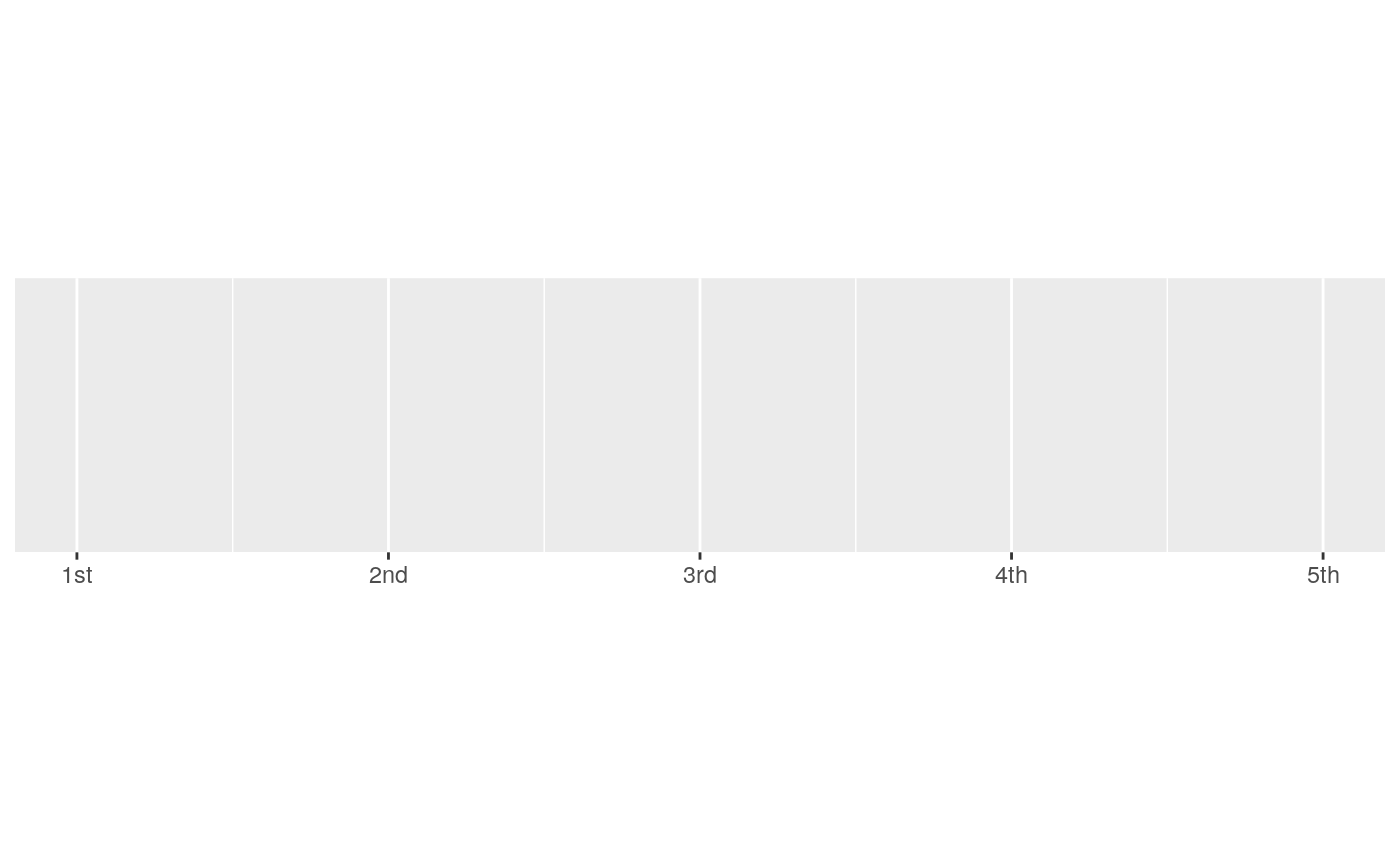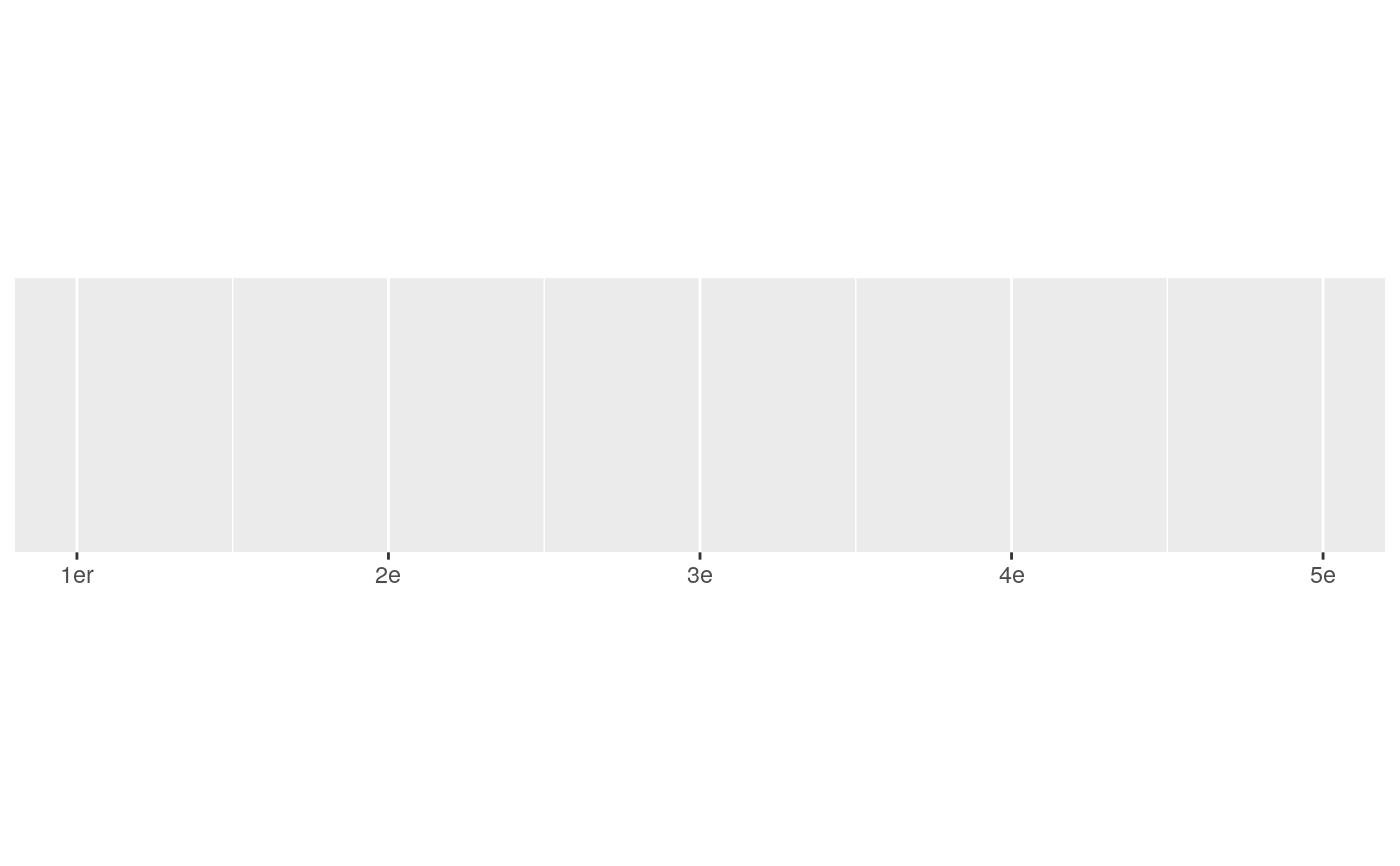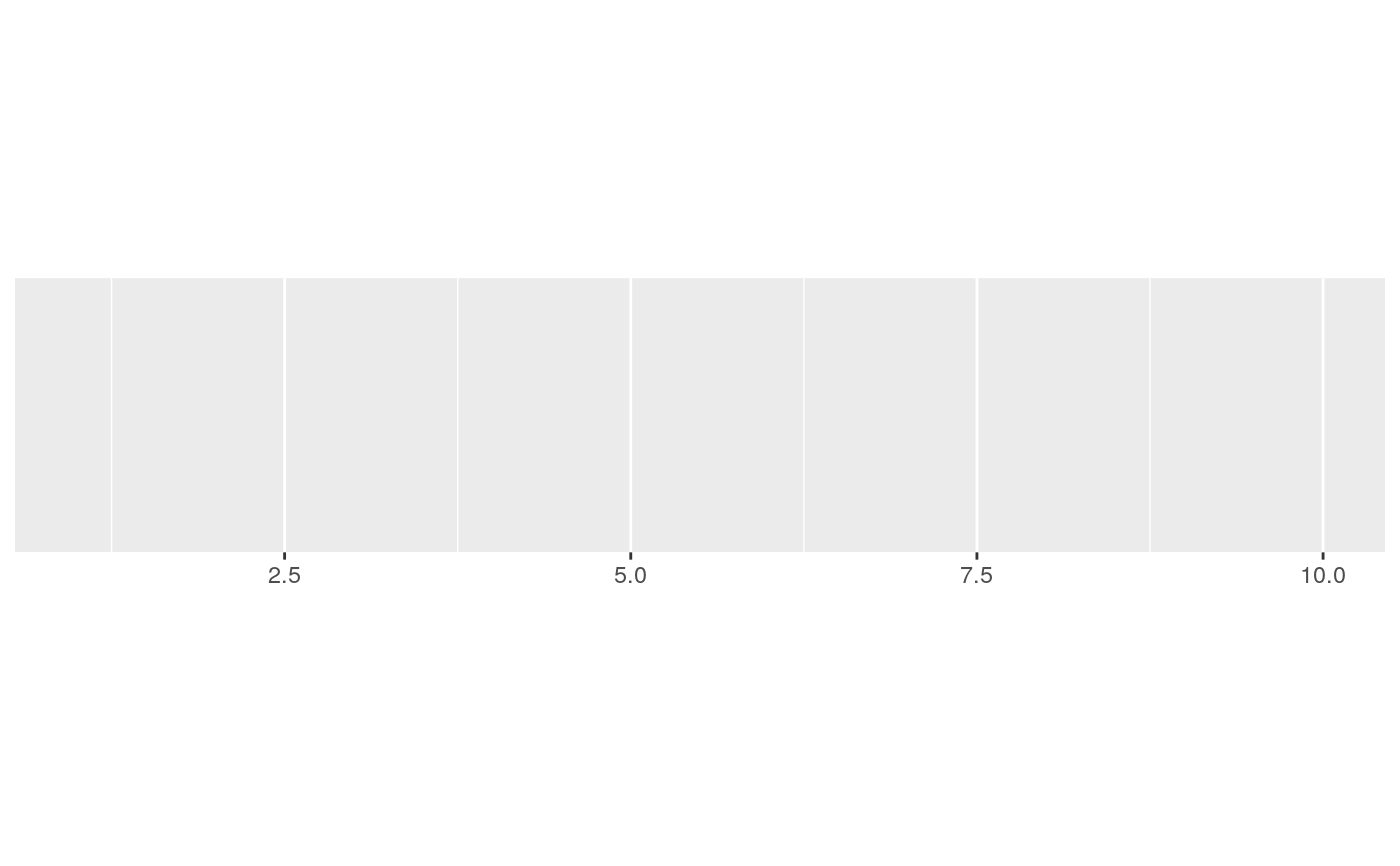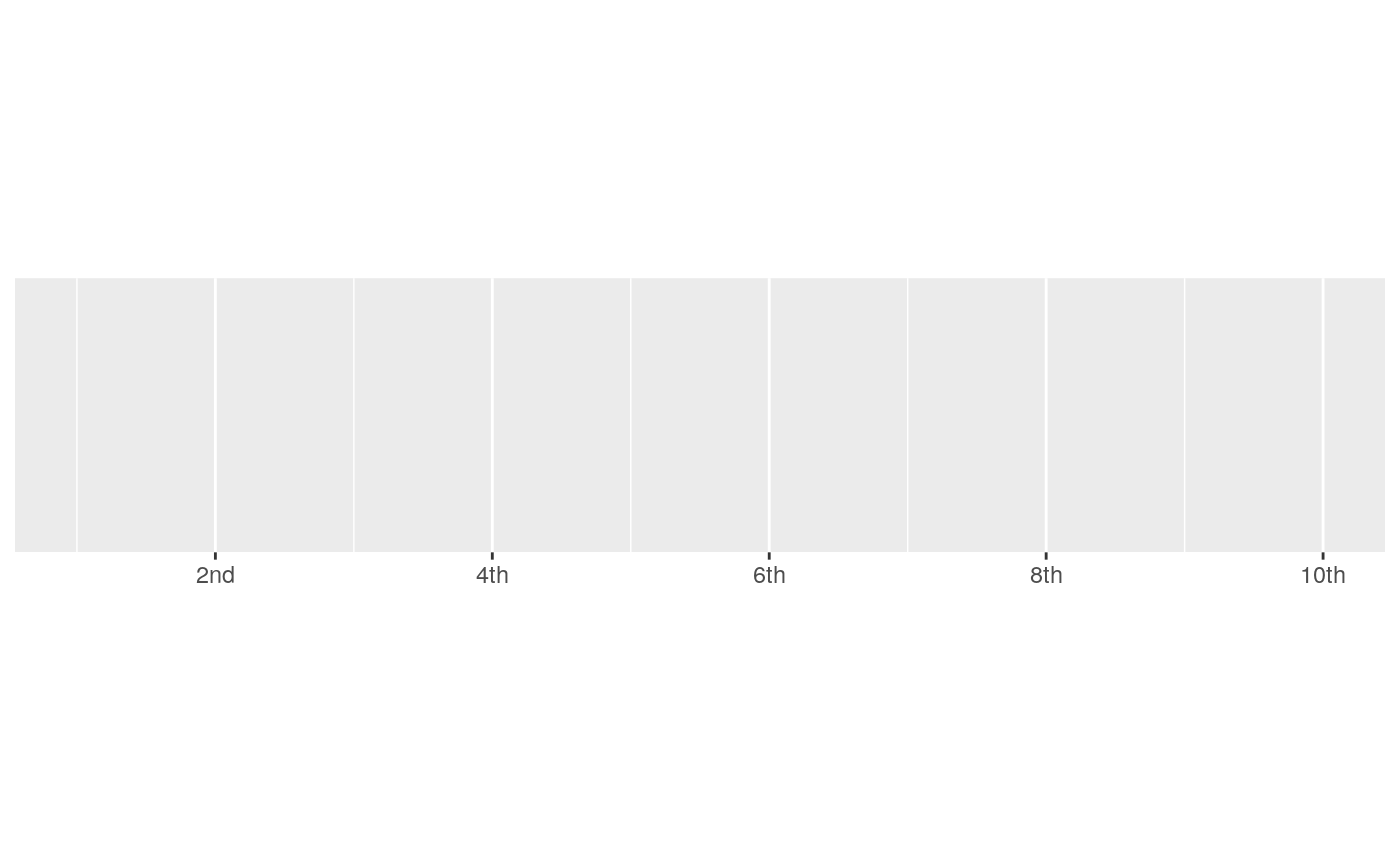Round values to integers and then display as ordinal values (e.g. 1st, 2nd, 3rd). Built-in rules are provided for English, French, and Spanish.
label_ordinal( prefix = "", suffix = "", big.mark = " ", rules = ordinal_english(), ... ) ordinal_english() ordinal_french(gender = c("masculin", "feminin"), plural = FALSE) ordinal_spanish() ordinal_format( prefix = "", suffix = "", big.mark = " ", rules = ordinal_english(), ... ) ordinal( x, prefix = "", suffix = "", big.mark = " ", rules = ordinal_english(), ... )
Arguments
| prefix, suffix | Symbols to display before and after value. |
|---|---|
| big.mark | Character used between every 3 digits to separate thousands. |
| rules | Named list of regular expressions, matched in order. Name gives suffix, and value specifies which numbers to match. |
| ... | Other arguments passed on to |
| gender | Masculin or feminin gender for French ordinal. |
| plural | Plural or singular for French ordinal. |
| x | A numeric vector to format. |
Value
All label_() functions return a "labelling" function, i.e. a function that
takes a vector x and returns a character vector of length(x) giving a
label for each input value.
Labelling functions are designed to be used with the labels argument of
ggplot2 scales. The examples demonstrate their use with x scales, but
they work similarly for all scales, including those that generate legends
rather than axes.
Old interface
ordinal() and format_ordinal() are retired; please use label_ordinal()
instead.
See also
Other labels for continuous scales:
label_bytes(),
label_dollar(),
label_number_auto(),
label_number_si(),
label_parse(),
label_percent(),
label_pvalue(),
label_scientific()
Examples
#> scale_x_continuous()#> scale_x_continuous(labels = label_ordinal())#> scale_x_continuous(labels = label_ordinal(rules = ordinal_french()))# The rules are just a set of regular expressions that are applied in turn ordinal_french()#> $er #> [1] "^1$" #> #> $e #> [1] "." #>ordinal_english()#> $st #> [1] "(?<!1)1$" #> #> $nd #> [1] "(?<!1)2$" #> #> $rd #> [1] "(?<!1)3$" #> #> $th #> [1] "(?<=1)[123]$" #> #> $th #> [1] "[0456789]$" #> #> $th #> [1] "." #># Note that ordinal rounds values, so you may need to adjust the breaks too demo_continuous(c(1, 10))#> scale_x_continuous()#> scale_x_continuous(labels = label_ordinal())#> scale_x_continuous(labels = label_ordinal(), breaks = breaks_width(2))





